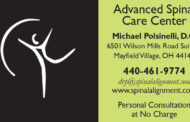By Dr. Jamie DelVecchio
As summer comes to an end, and fall sports begin, we commonly see chronic overuse injuries start to develop. Since these injuries are subtle and occur over time, they can be difficult to diagnose and treat. Overuse injuries result from repetitive microtrauma to muscles, tendons or bones. Some common examples include runner’s knee, jumper’s knee, Achilles tendinitis, tennis elbow and shin splints.
So why do overuse injuries occur?
The human body undergoes significant physical stress with exercise and physical activity. This physical stress is beneficial in many ways, allowing our muscles and bones to become stronger through a breakdown and remodeling process. However, if the physical stress is too much, the breakdown of muscle or bone occurs more rapidly than the remodeling, resulting in an overuse injury.
Overuse injuries are generally a result of…
…a change in either the athlete, the environment or the activity. Some people are more prone to overuse injuries due to strength imbalances or differences in body alignment. Environmental factors that play a role include both changes in equipment (i.e. new running shoes) or terrain (i.e. running on hard or soft surfaces). Yet the most common causes of overuse injuries are training errors and continued participation in activities despite another injury.
A thorough history and physical exam…
…are usually sufficient to diagnose an overuse injury. In some cases, an x-ray may be done to aid in diagnosis. When developing a treatment plan for these injuries, a multi-disciplinary approach is very important. Physicians, physical therapists, athletic trainers and coaches can all play a role in treatment.
Several tips for treating overuse injuries…
…include warming up and cooling down before and after exercise; cutting back on the duration and/or intensity of the activity; cross training to maintain fitness level while avoiding the activity causing the pain; icing the site of injury after the activity; and taking anti-inflammatory medications as recommended by your doctor. Rehabilitation typically plays a key role in treatment as well, whether it be through physical therapy or working with an athletic trainer.
Most overuse injuries can be prevented.
Listen to your body. Don’t push through pain. Increase workouts gradually. Make sure to you are giving yourself adequate rest and recovery time from your activity. Eat a well-balanced diet. If you develop pain that is persistent or worsening, seek out a qualified health care professional.
Our goal is to keep you healthy so you can get back to the activities you love!
























